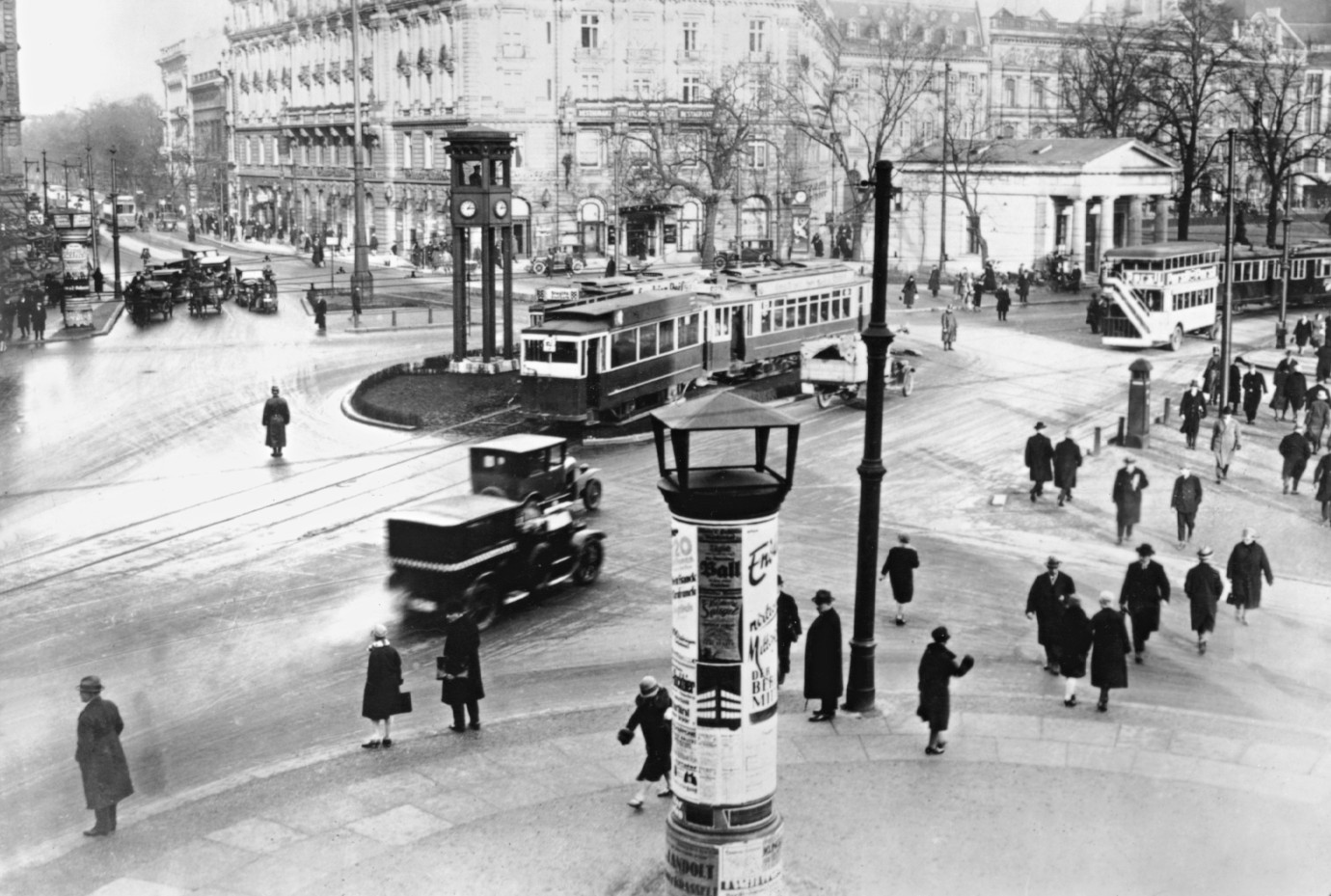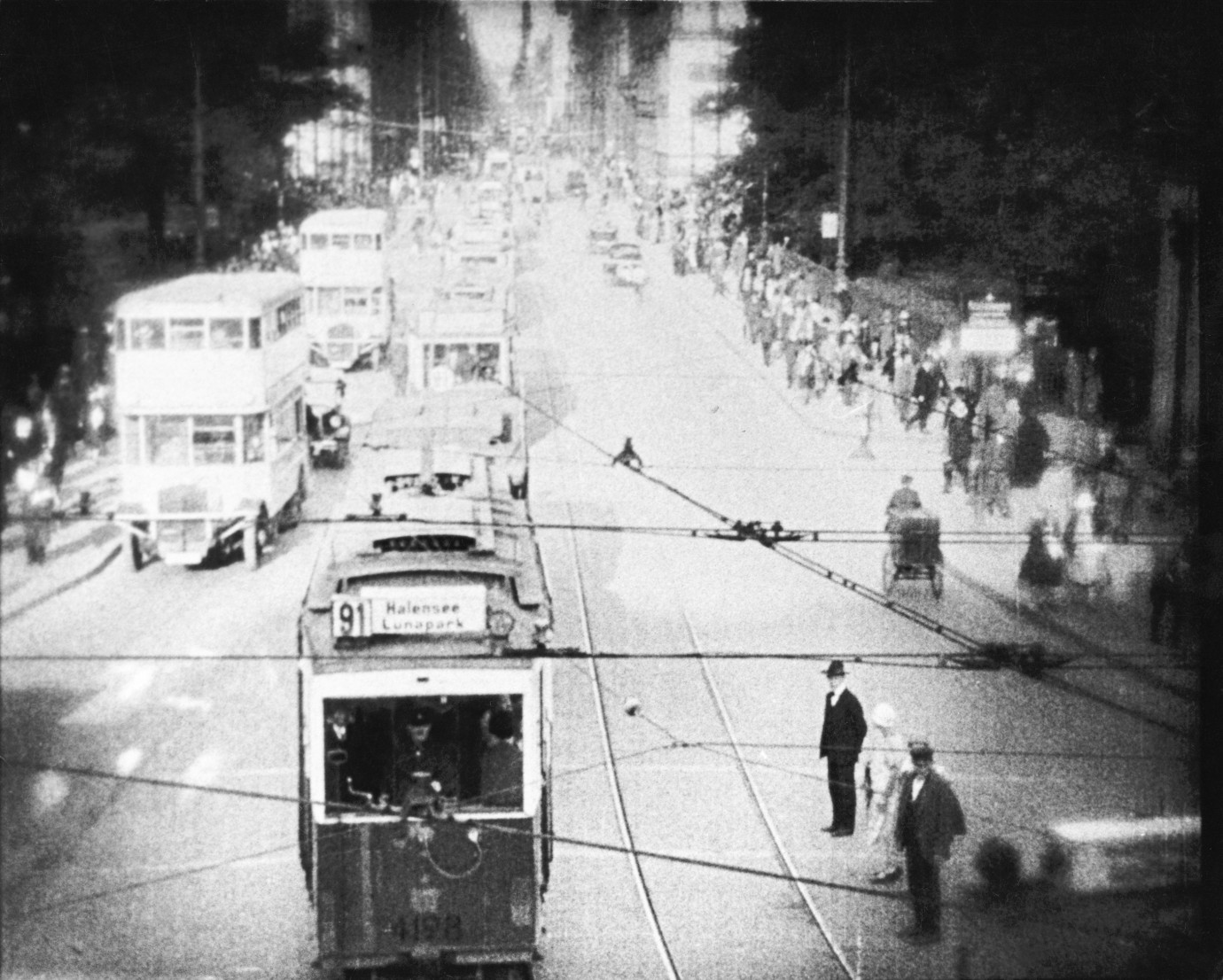Berlin. Die Sinfonie der Großstadt
Berlin. Symphony of a Great City
Source: Deutsche Kinemathek

Berlin. Die Sinfonie der Großstadt | Berlin. Symphony of a Great City
Retrospective
Source: Deutsche Kinemathek

Berlin. Die Sinfonie der Großstadt | Berlin. Symphony of a Great City
Retrospective
Source: Deutsche Kinemathek
‘Lights! Cars! People! Like a montage!’ Inspired by the visual big-city experiences at dusk of screenwriter Carl Mayer, this is the most famous of the German experimental film genre known as ‘Querschnittfilme’ or ‘cross-section’ films that were part of the new functionalist movement. A dense, rhythmic montage of documentary images of Berlin becomes a composition of movement and light. From dawn to midnight, the urban feat records every nuance between all-encompassing white when a locomotive’s steam fills the frame, to pitch black as the camera travels through a tunnel. With its play of lighted advertisements, fireworks, and the ‘sea of flames’ of a nighttime city, the cinematic ‘symphony’ attains the utopian avant-garde vision of ‘absolute film’ – abstract painting with light. This was mostly due to ‘cinematographic director’ Karl Freund, who used extremely fast film stock so that night filming was possible. The German trade journal ‘Kinematograph’ wrote on Sept. 24, 1927: ‘An amazing achievement! Certainly only possible due to the invention of the hyper-sensitive negative material by [cinematographers] Kuntze [and] Safra, whose contributions are not emphasized enough in the credits.’